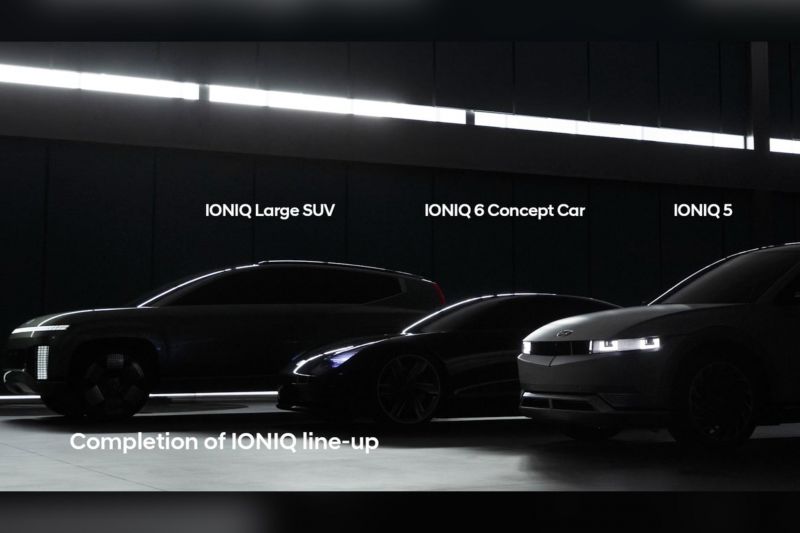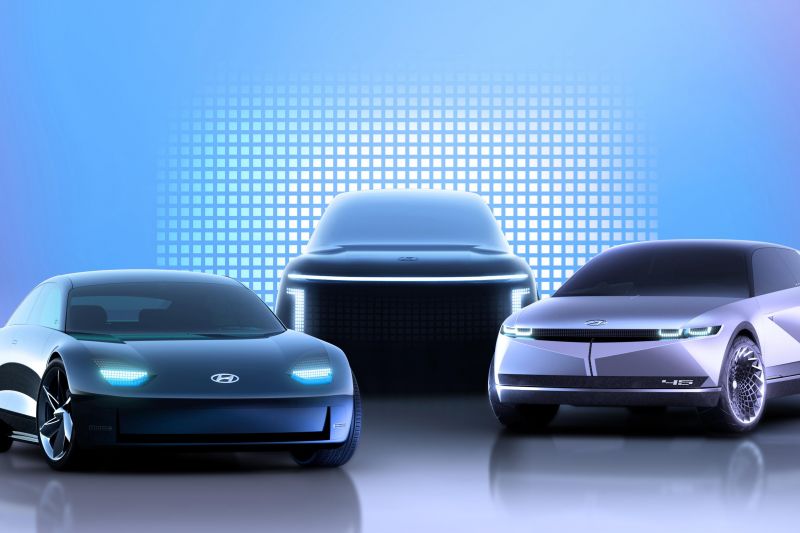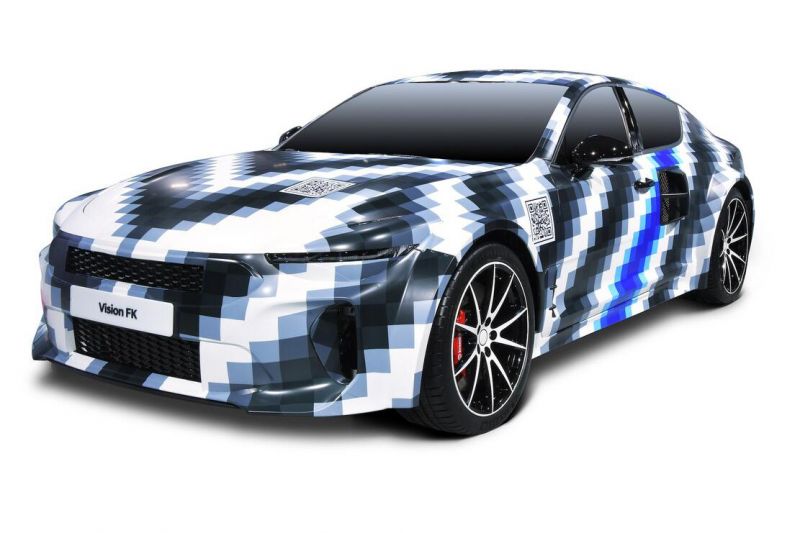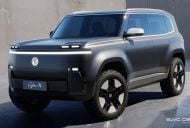Hyundai has teased the next two members of its Ioniq all-electric family.
The Ioniq 6 and Ioniq 7 were teased by Hyundai Europe as it announced its plans to cease the sale of internal combustion engine-powered vehicles by 2035.
This is our first look at the side profile of the Ioniq 7; the Ioniq 6 in this image is labelled as a concept car and looks unchanged from the Hyundai Prophecy concept.
The front end of the large SUV has been teased previously, featuring the same grid pattern on its lighting elements as can be seen on the tail lights of the Ioniq 5 and Staria.
While the front end teaser made the Ioniq 7 appear bluff and boxy, the teaser of its silhouette shows it has a rounded bonnet and a sweeping roofline.
The belt line kicks up at the C-pillar for a more dynamic look, while the tail lights appear to be mounted quite high.
Hyundai has previously confirmed the Ioniq 6 will launch in 2022, with the Ioniq 7 following in 2024.
Like the Ioniq 5, they’ll use the new, all-electric E-GMP architecture.
Carscoops reported earlier this year the Ioniq 6 will feature a 73kWh battery pack and two different powertrains.
A single electric motor powertrain will produce 160kW of power and a dual-motor powertrain will produce 230kW, with Hyundai targeting a range in excess of 483km.
The Palisade-sized Ioniq 7 will have an optional dual-motor all-wheel drive powertrain with 230kW of power.
It’ll use a 100kWh battery pack, with Hyundai also targeting a range of more than 483km.
The company has committed to reducing its 2019 carbon emission levels by 75 per cent by 2040, with the target of zero carbon emissions by 2045.
By 2030, Hyundai aims for 30 per cent of its global vehicle sales to be from zero-emission vehicles. By 2040, it wants zero-emissions vehicles to account for 80 per cent of total sales.
Its luxury division Genesis has already pledged to only sell all-electric and hydrogen vehicles by 2030.
Hyundai has been one of the biggest champions of hydrogen power along with Toyota and BMW, and has imported its hydrogen fuel-cell Nexo crossover to Australia where it’s been put to work in government fleets.
It plans to launch a new generation of hydrogen fuel-cell drive unit in 2023 that’ll be 50 per cent cheaper and 30 per cent smaller than its current one, and from there to drastically ramp up production and broaden its use.
That includes a new generation of Nexo and a fuel-cell version of the Staria people mover.
Hyundai has also revealed a concept hydrogen sports car called the Vision FK, which features rear-wheel drive, 500kW of power, a Rimac electric system, and a 4.0-second 0-100km/h time.
Hyundai will also continue manufacturing hydrogen-powered heavy trucks, with a full range of commercial trucks and buses to come with both hydrogen fuel-cell electric (FCEV) and battery electric (BEV) drivetrains from 2028.
The company is seeking price competitiveness between the two zero-emission technologies as soon as 2030.
Hyundai also said there were plans underway for more hydrogen production and H2 bowsers across Europe, the US and Asia (as well as Australia), and that hydrogen was deemed an essential component of the future energy mix under the European Green Deal.
“We want to offer practical solutions for the sustainable development of humanity and with these breakthroughs, we aim to help foster a worldwide Hydrogen Society by 2040,” said Hyundai Motor Group chairman Euisun Chung.
MORE: Hyundai’s hydrogen push: cost parity with EVs by 2030
MORE: Hyundai aims to be carbon neutral by 2045













